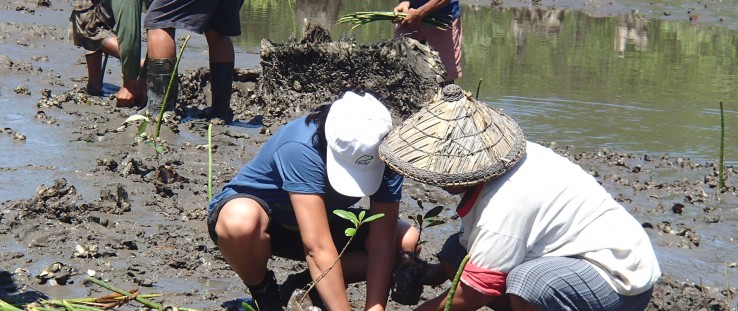 Mangrove planting in Zamboanga Sibugay in Mindanao. The Philippine Tropical Forest Conservation Foundation introduced key pioneering practices in mangrove restoration in this area.
PTFCF
Mangrove planting in Zamboanga Sibugay in Mindanao. The Philippine Tropical Forest Conservation Foundation introduced key pioneering practices in mangrove restoration in this area.
PTFCF
 Mangrove planting in Zamboanga Sibugay in Mindanao. The Philippine Tropical Forest Conservation Foundation introduced key pioneering practices in mangrove restoration in this area.
PTFCF
Mangrove planting in Zamboanga Sibugay in Mindanao. The Philippine Tropical Forest Conservation Foundation introduced key pioneering practices in mangrove restoration in this area.
PTFCF
When I entered the offices of the Palawan NGO Network, Inc. (PNNI), it smelled like an auto mechanic shop and I was astonished to find desks crowded out by oily chainsaws stacked to the ceiling.
Here was a community-based NGO, on the island of Palawan, so committed to stopping illegal logging that it placed its members in harm’s way to courageously enforce laws through the dangerous work of confronting illegal harvesting, chainsaw confiscation and paralegal work on criminal cases.
PNNI is just one of over 280 NGOs benefiting from forest conservation grants from the Philippine Tropical Forest Conservation Foundation (PTFCF). The PTFCF is a grant-making conservation trust fund authorized by the Tropical Forest Conservation Act (TFCA), a U.S. Government program that supports forest conservation and debt relief in eligible developing countries. Each participating country signs a bilateral agreement with the United States to fund forest conservation, usually through local foundations that make grants to civil society organizations and communities. In exchange, the U.S. Government writes off a negotiated share of that country’s dollar debt, according to specific criteria.
By design, the PTFCF board is comprised of a majority of members from civil society. The Philippines and U.S. Governments are also members in this productive arrangement that is a true public-private partnership.
Since the creation of its grants program in 2005, the PTFCF has provided $4.53 million in grants, generating approximately $3.44 million in co-financing from partners. Efforts to reduce illegal logging, like those of the PNNI, constitute only a small part of the total grant portfolio.
Grants have also helped improve the management of approximately 3.2 million acres of forest lands, restore approximately 8,400 acres of forests through the re-introduction of native tree species, establish over 40 community-conserved critical watersheds in key biodiversity areas, and create 52 community-level sustainable enterprises. In addition to conserving biological diversity and maintaining ecosystem functions for human well-being, such efforts save millions of dollars in natural disaster recovery by mitigating flooding and other storm impacts.
Less Logging, More Mangroves
In the years following my encounter with PNNI, I continued to monitor the impressive PTFCF efforts to curb illegal logging in the Philippines. I found collaborative public-private efforts to enhance forest monitoring and law enforcement on the islands of Palawan, Mindinao and Luzon. Task forces were trained; major anti-logging campaigns were undertaken; and hundreds of thousands of dollars’ worth of illegally cut timber confiscated—and the offenders prosecuted. Today, annual data from Palawan show a decline in the incidence of illegal logging and an increase in the interception of illegal trafficking of wildlife.
As a result of the impressive track record of its first TFCA agreement in 2002, the PTFCF and the United States recently negotiated a new $31.8 million TFCA agreement signed in July of this year. This second fund will contribute to the five-year Partnership for Growth (PFG) initiative, signed by the United States and the Philippines in November 2011. It will be used to provide grants to conserve, maintain and restore tropical forests in the Sierra Madre, Samar/Leyte, Palawan and Bukidnon/Misamis areas. In addition to helping to preserve the Philippines’ extraordinary terrestrial biodiversity, the fund will contribute to international climate change mitigation efforts.
With the completion of this second Philippine deal, the TFCA program now has 19 total agreements in 14 countries. This innovative approach to financing forest conservation has globally generated an impressive $327 million over 13 years to these critical “debt for nature” efforts.
When one considers the substantial interest income from deposits and financial leverage from co-financing partners, the impact is further strengthened. One can expect many more stories, like PNNI’s, of courageous conservation efforts in the coming years.











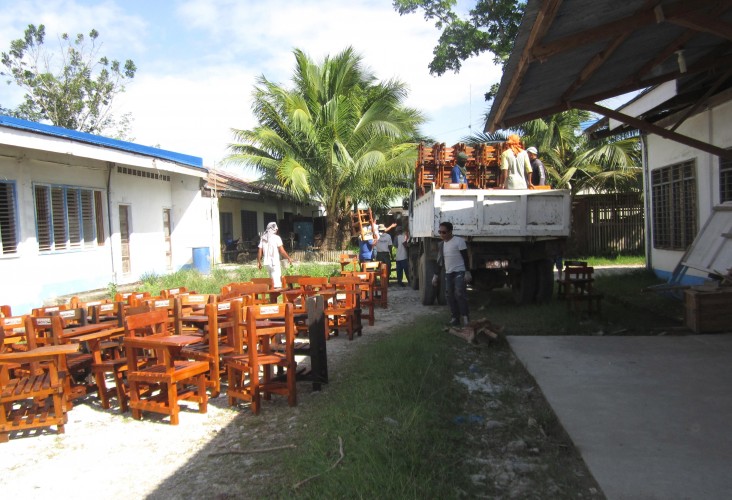
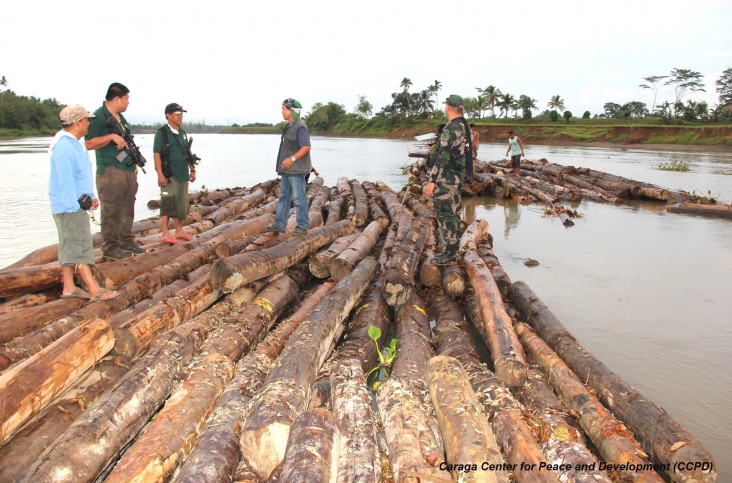
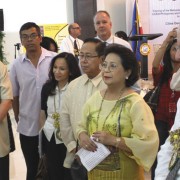
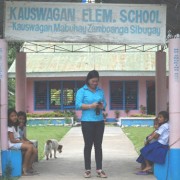
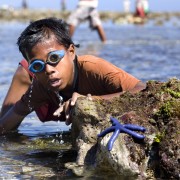
Comment
Make a general inquiry or suggest an improvement.